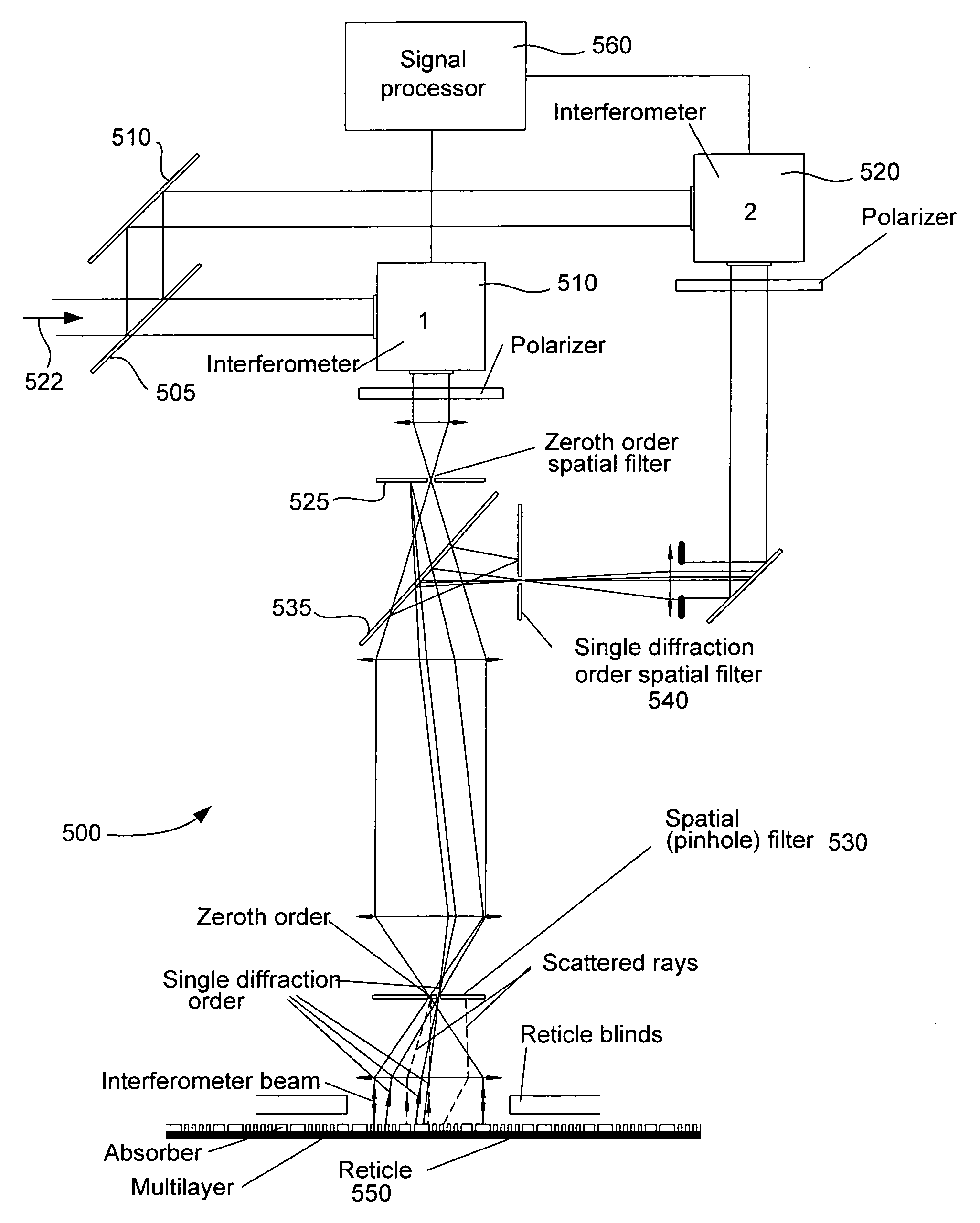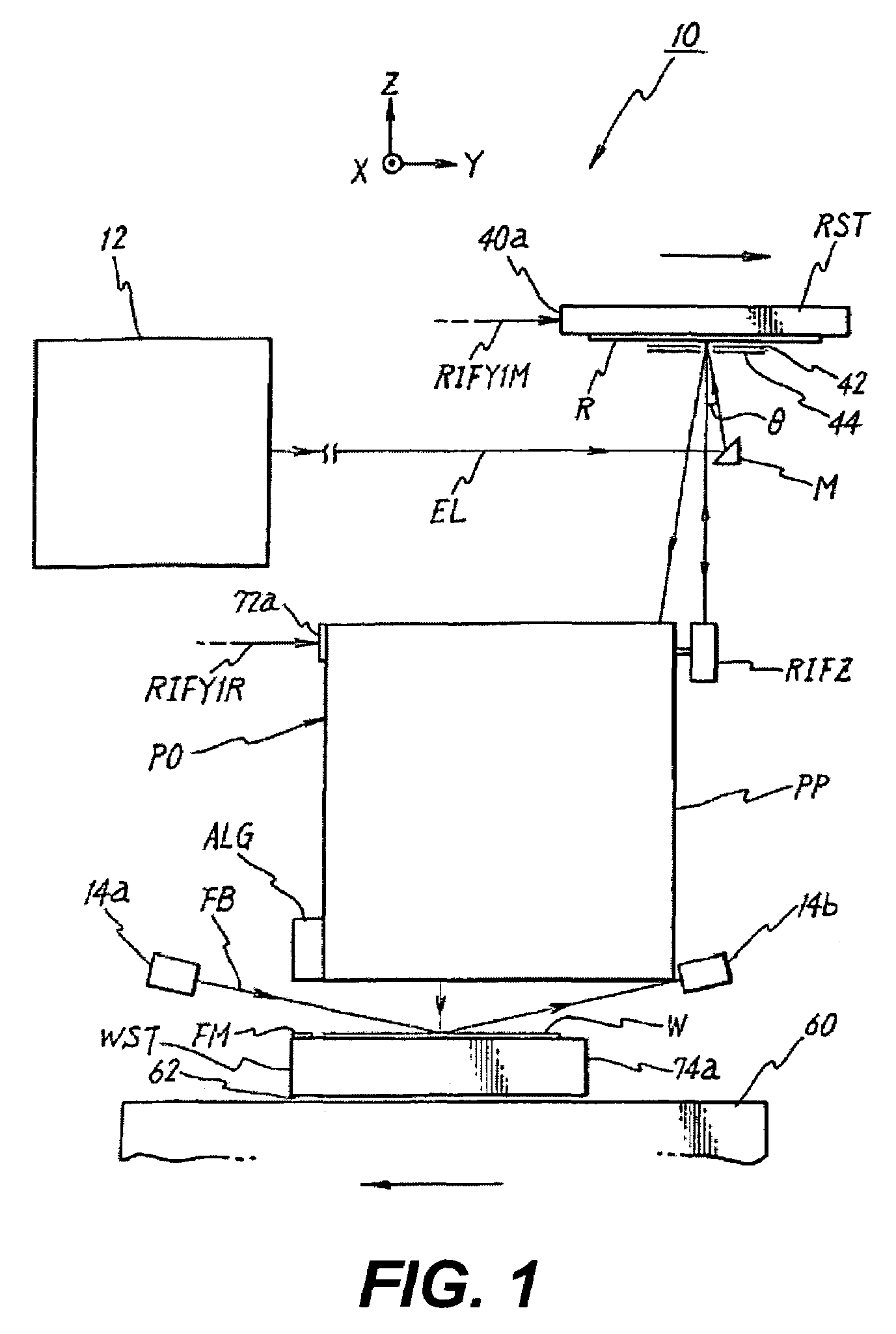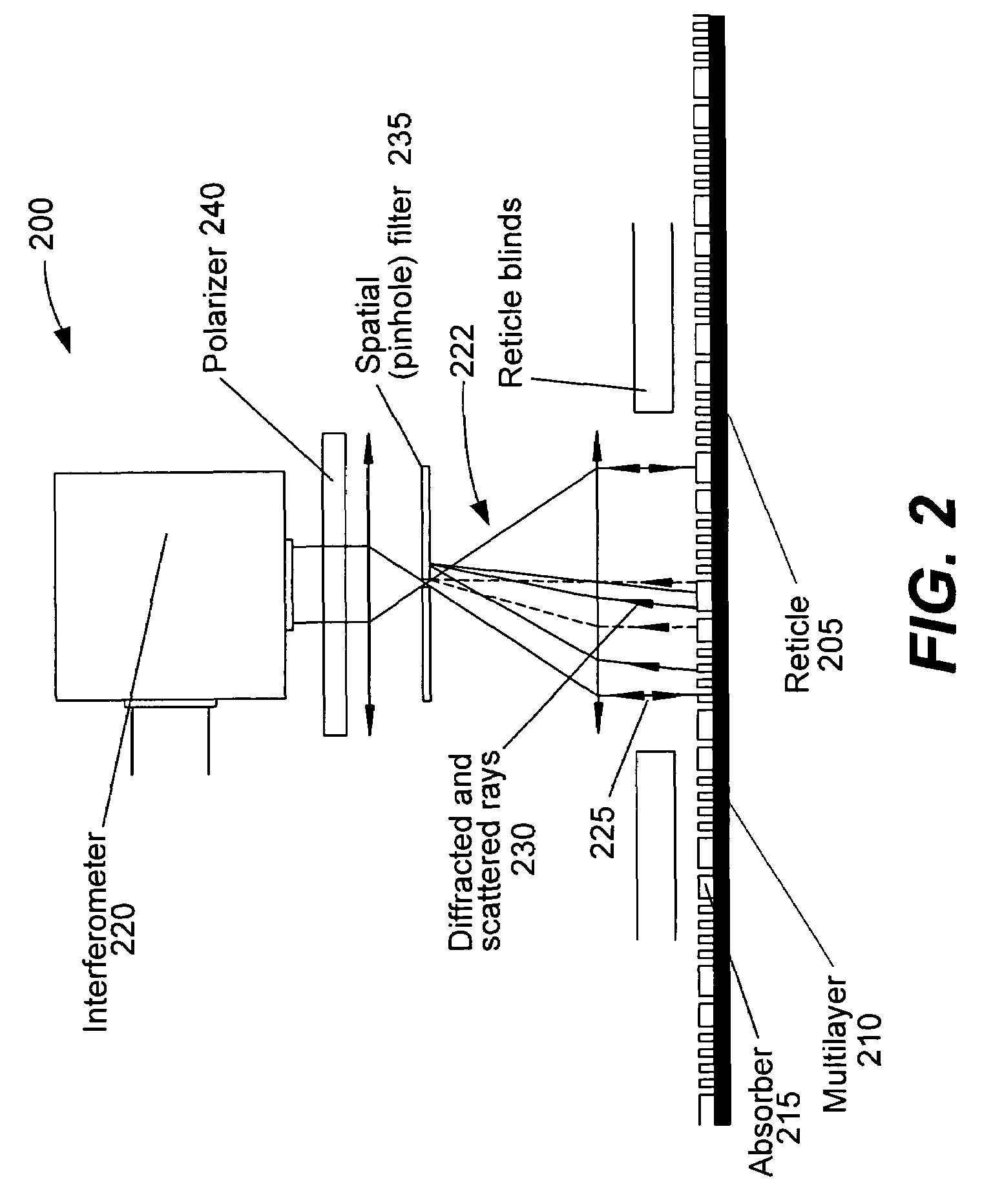Autofocus methods and devices for lithography
a technology of autofocus and lithography, which is applied in the direction of photomechanical treatment, printing, instruments, etc., can solve the problems of large glancing angle af devices, inability to meet the requirements of future applications, and large overlay errors of about 10 nm, so as to reduce the amount of undesired signals, reduce signal variations, and facilitate further signal processing
- Summary
- Abstract
- Description
- Claims
- Application Information
AI Technical Summary
Benefits of technology
Problems solved by technology
Method used
Image
Examples
Embodiment Construction
[0043]In this application, numerous specific details are set forth in order to provide a thorough understanding of the present invention. It will be obvious, however, to one skilled in the art, that the present invention may be practiced without some or all of these specific details. In other instances, well known process steps have not been described in detail in order not to obscure the present invention.
[0044]The invention includes various AF devices and methods for reducing the amount of undesired signal coming from a wafer or reticle surface. A significant fraction of light reaching the wafer or reticle surface will be diffracted by the patterned surface. First-order diffracted light and higher orders of diffracted light from such a surface will not be oriented vertically, but instead will emerge at angles to normal incidence. According to some embodiments of the invention, first-order diffracted light and higher orders of diffracted light are eliminated with a pinhole spatial ...
PUM
 Login to View More
Login to View More Abstract
Description
Claims
Application Information
 Login to View More
Login to View More - R&D
- Intellectual Property
- Life Sciences
- Materials
- Tech Scout
- Unparalleled Data Quality
- Higher Quality Content
- 60% Fewer Hallucinations
Browse by: Latest US Patents, China's latest patents, Technical Efficacy Thesaurus, Application Domain, Technology Topic, Popular Technical Reports.
© 2025 PatSnap. All rights reserved.Legal|Privacy policy|Modern Slavery Act Transparency Statement|Sitemap|About US| Contact US: help@patsnap.com



